|
|
As faithful an Armenian advocate as America's Public
Broadcasting has been over the years, at least the television network was open
to airing a debate.... this time after having broadcast yet ANOTHER
pro-Armenian show, "The Forgotten Genocide,"in 1983. The debate
featured two "stars" from both sides, Professors Justin McCarthy and
Richard Hovannisian. The following article appeared in the October 1983/5
issue of ATA-USA. (Notes on the film follow.)
|
|
|
| ATAA
Participates in TV Debate on the Armenian Issue |
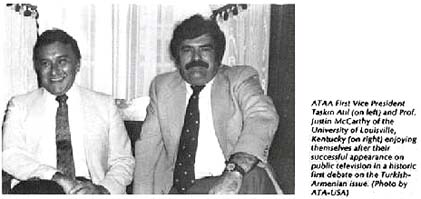
ATAA First Vice President Taskin Atsi (on left) and Prof. Justin McCarthy
of the University of Louisville, Kentucky (on right) enjoying themselves after their
successful appearance on public television in a historic first debate on the
Turkish-Armenian issue. (Photo by ATA-USA)
On June 24, 1983 public television station WETA in Washington, DC aired a live program in
which two spokesmen for the Armenians were pitted against two spokesmen for the Turkish
point of view. The program was the result of a request by ATAA for equal time on TV
following the broadcast of "The Forgotten Genocide," a movie that blatantly
distorts history and is most damaging to the Turkish nation and Turks everywhere. Although
there were no spokesmen for the Turkish side when the movie was shown, the station
insisted that the Armenian side be represented also if we were to appear on TV. After two
attempts to get an opportunity for presenting our case unilaterally, just as the previous
program had presented the Armenian story unhindered by opposing views, it became apparent
that the station would give us access to the airwaves only if we agreed to equal
representation by the Armenian side. Now, this looks like questionable arithmetic. It says
that one unit of Turkish time equals three units of Armenian time. Nevertheless, we
welcomed the challenge.
Sanford Ungar, the moderator, opened the session with a fairly balanced presentation of
points of view from both sides. Then he turned to Richard Hovannisian, Professor of
Armenian and Middle Eastern history at UCLA, who is a leading interpreter of historical
facts with admirable consistency to project images of completely innocent Armenians and
completely villainous Turks. Hovannisian denied that the Armenians in the Ottoman Empire
were seeking independent nationhood and asserted that they were defending their civil
rights and seeking equal status because, he said, "they were second class
citizens." Since Hovannisian is a historian, he should have known about Cosmidis,
Hamparsoum, Dimitris Yowich, Anastasse,Aristidi,Carolidi, Haladjian, Babguian, Trayan,
Daghavarian, and countless other Armenians and Greeks who served as elected deputies in
the General Assembly even during the last years of the Ottoman Empire. Second class
citizens indeed!
When asked if the 1.5 million figure is accurate for the number of Armenians killed,
Hovannisian said that numbers were not important. He said, "a whole nation
died." He asserted that Armenians were moved and lost their way of life in their
homeland forever.
Moderator Ungar then turned to Justin McCarthy, Associate Professor of Middle Eastern
History at the University of Louisville in Kentucky, and asked if he agreed. McCarthy
expressed his concern about the way Armenians present the facts. He argued that numbers
were important, stating that over 2 million Moslems lost their lives in the conflict. He
said what happened was a people problem in which everyone suffered, especially the
peasants who really did not want to fight in the war on either side. McCarthy said he was
interested in verifiable facts and that he knew of no evidence to show there was a
deliberate policy to wipe out the Armenians in the Ottoman Empire. He added, "any
historian who says he knows the truth is not true to his profession." According to
McCarthy, 600,000 Armenians perished due to starvation, cholera, typhoid, typhus, and
outright murder, all of which also took the lives of 2 million Moslems.
In response to Ungar's question about American Ambassador Henry Morgenthau's writings,
which generally condemn the Ottomans, McCarthy pointed out that Morgenthau never left
Istanbul to see for himself and relied on reports from missionaries and heard what he
wanted to hear. McCarthy said that even Morgenthau expressed concern about the
exaggerations in those reports. He mentioned others such as Admiral Bristol who had his
agents visit the eastern provinces and who told a completely different story.
When Ungar asked Hovannisian about the Turks who also died at the hand of the Armenians,
Hovannisian claimed that Armenians killed Turks in self defense. He then related his
father's experience who, he said, miraculously escaped after having lost 30 members of his
immediate family. His father, "when he had an opportunity would kill something,"
he said. Perhaps Professor Hovannisian could not bring himself to admit those were people
— not things his father killed!
Moderator Ungar asked Tarkin Atil, First Vice
President of ATAA, why the conflict is still going on, terrorism and all. Atil said that
the Armenians had been peddling defamatory information about Turks as facts for years and
that there have been no attempts by anyone to correct the record. Atil added that the ATAA
was formed four years ago to speak out every time falsification of history occurs and the
Turkish people are defamed. When Ungar wanted to know why the Turks do not apologize for
what was obviously mistreatment of Armenians, Atil said, "there was no mistreatment
of Armenians per se. It was mistreatment of humanity by human beings." He said that
the same fate befell Turks and Armenians alike. He asserted that the issue is hot now
because certain Armenians benefit from keeping the issue alive. He cited as examples a
history professor who wants to be a leader among his people, a man whose livelihood
depends on keeping the issue alive, Armenians who expect reparations from the Turkish
government to live the easy life, and community leaders who want to keep their people
together by the introduction of a common enemy as Hitler did with the German people
against the Jews.
Moderator Ungar next turned to Ross Vartian, Executive Director of the Armenian Assembly
of America, and asked about Armenian terrorism. Vartian claimed that his organization
condemns terrorism but he said there must be recognition that there was violence
perpetrated by a government as well. He stated that Armenians basically want two things:
recognition by the Turkish government of its wrongs and restitution to the Armenian
survivors. He complained that the Turks are not accessible for dialogue to reach peaceful
reconciliation.
Ungar switched to the subject of the Holocaust Memorial next and the
question of including the Armenian claims in the museum. He asked McCarthy what he thought
about the inclusion of non-Jewish examples. "If the museum and the memorial intends
to take into account each case of massive death and man's inhumanity to man, then I think
this should be one of the things that should be included," McCarthy said. But, he
said he also hoped the museum would include all the Turks who died in 1915, 1918, 1922,
and the many groups of Turks like the Crimean Tatars, 2 million of whom were killed by
Stalin. He mentioned the massive numbers of Turks who were forced to leave their
homelands. Referring to Hovannisian's earlier statement about the destruction of a people,
McCarthy said, "from what he said It would appear that somehow the Armenians were
moved, or killed, and that they are gone, and that this is something that happened to the
Armenians." Back in the early 1800's, he stated, there were all kinds of people in
the region and, from 1827 on, all of them moved, including 2 million Moslems. He revealed
the fact that Erevan, the center of Soviet Armenia today was not Armenian at all, it was
Turkish territory. "The Turks left, the Armenians moved in," he said. In
Anatolia, he said, the Greeks and the Armenians are gone and replaced by Moslems but, he
said, these people are also gone from their homelands. McCarthy emphasized the fact that
what happened to the Armenians was by no means unique.
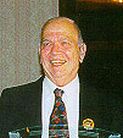 |
|
Hovannisian
in 2001 |
Ungar asked Hovannisian what he
thought about including the plight of Turks in the museum. Hovannisian responded by saying
that in the 20th century the two most classic cases are the Armenian and Jewish
experiences "which are very close," he said. Hovannisian claimed that the
Turkish campaign spent enormous resources in the last 10 years and succeeded in raising
questions. He portrayed the TV program he was on as an example of this success and seemed
to resent the fact that his well known assertions, which went unchallenged for so long,
were being questioned. While Vartian earlier had complained about the lack of dialogue,
Hovannisian was visibly uncomfortable with dialogue. Monologue seems to be his forte.
Ungar turned to Atul and asked about treatment of the Armenians in Turkey today. Atul
stated that there is no persecution and that Armenians have their churches and schools and
are treated the same as anybody else. He said that the Armenian Patriarch has said time
and again that there is no persecution. He added that the Armenian apologists claim the
Patriarch is not free to speak which, he said, is not true. When Ungar asked Vartian if he
had any evidence to contradict Atil's statement and wanted to know if Armenians want to
leave Turkey, Vartian claimed that this cannot be determined because, he said, "it is
impossible to speak to Armenians in Turkey openly." Of course, Mr. Vartian's
assertion is preposterous. It shows how much the American Armenian community is out of
touch with reality and how deeply immersed it is in xenophobic fantasies. This writer has
been in continuous contact with intimate friends who are Turkish Armenians. These Turkish
citizens do not espouse the philosophy Mr. Vartian would like to hear, not because they
are afraid to speak, but because they love their country and they refuse to be
intimidated.
The last topic of the program was the question of American-Turkish relations in the event
that the Armenians are included in the Holocaust Memorial. McCarthy argued for the
establishment of a group of scholars as a commission to research the Armenian claims and
if there was culpability on the part of the Ottomans, which he said he doubted very much,
then the Armenians should be included without regard to what the Turkish government
thinks. He said, "I'm not a Turk, I'm not worried about what the Turks think. The
question is whether it's true or whether it's false." He concluded by saying that a
lot more work needs to be done.
We agree that work needs to be done, but by impartial scholars. Professor Hovannisian can
be excused his transgressions of historical accuracy because of his strong personal
feelings. It would be inexcusable, however, to rely on his work as a source of scholarly
information on the Armenian question.
|
Notes on THE FORGOTTEN GENOCIDE
|
As part of the Armenians' systematic campaign
to keep suckering the unwary public, the Armenian cinema’s role in their
propaganda web is one the Armenians could not afford to overlook. As Mrs. Oliver
Harriman, Chairman of the National Motion Picture Committee, put so eloquently (as
reported in The New York Times'
February 15, 1919 issue):
"The whole purpose of the picture is to
acquaint America with ravished Armenia," said Mrs. Harriman," to visualize
conditions so that there will be no misunderstanding in the mind of any one about
the terrible things which have transpired. It was deemed essential that the leaders,
social and intellectual, should first learn the story, but later the general public
shall be informed. It is proposed that before this campaign of information is
complete, as many adults as possible shall know the story of Armenia, and the screen
was selected as the medium because it reached the millions, where the printed word
reaches the thousands."
Yep, the power of the cinema knows no bounds.
Exactly why MIDNIGHT EXPRESS caused so much damage in the minds of many Americans
and other Westerners ignorant about Turkey.
Oh, the film Mrs. Harriman was referring to? It
was this one:
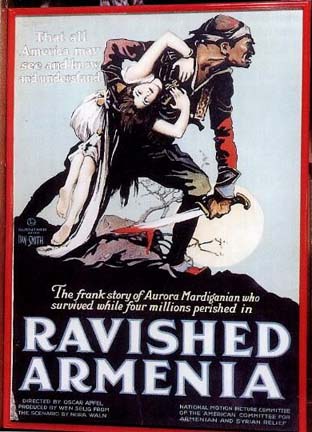
The one Ambassador "Mr. Egomaniac"
Morgenthau appeared in... as himself.
The Armenians couldn't be content with the
incidental "genocide"-related films made by Armenian-Americans, such as
1981's ASSIGNMENT BERLIN (directed and produced by Detroit's Hrayr "Peter"
Toukhanian) and 2002's ARARAT (directed by Atom Egoyan, an Armenian-American of the
Canadian variety) or Armenians of other nationalities, such as the Armenian
Frenchman Henri Verneuil (Ashot Malakian) who wrote and directed the French TV-movie
MAYRIG (1991); no, they had to
take matters into their own hands to insure a stream of one-sided politically
motivated, one sided “hatred films” which blame a nation without questioning the
other side’s arguments.
One way in which Armenians took matters into
their own hands was by creating "The Armenian Film Foundation,"
established in 1979 as "a non-profit, educational and cultural organization
dedicated to the documentation on film and video of Armenian heritage and
life," according to its web site, which further reports:
The Armenian Film Foundation has been
awarded several major grants, including the California Endowment of Humanities
(received jointly with the Armenian Assembly), Milken Families Foundation, United
States Office of Education, Arshag Dickranian Foundation, Ignatius Foundation, Alex
Manoogian Foundation, J. Roderick MacArthur Foundation, and Arco Foundation.
Over the years, the Foundation has also received financial backing from the southern
California community, for a variety of projects. These include providing
scholarships for film students working on projects of Armenian interest,
establishment of an industry-wide networking association to encourage young film
makers, and two international Armenian film festivals.
Sounds so nice and innocent, doesn't it? Funded
by a good number of wealthy Armenian organizations, as well as government branches,
influenced as they must be by the collective power of the many Armenians of
California. Their site claims thirteen films have been prepared "that depict
the cultural inheritance of the Armenian people," but the primary intention is
revealed as the site goes on to tell us: "The Foundation increasingly serves as
a primary motion picture resource bank for the Armenian Genocide..."
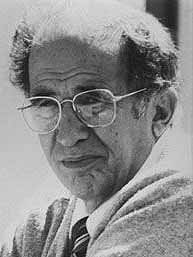 |
|
J.
Michael Hagopian
|
The man behind the Foundation is J. Michael
Hagopian, a Californian-Armenian. Mr. Hagopian has made many Armenian-related films,
not all directly genocide-related, of course... but I'll bet mention of the
"Genocide" is never far behind in any of his cinematic efforts. One of his
recent works was 2000's "Voices from the Lake - The Secret Genocide,"
which was funded "principally" by grants from the National Endowment for
the Arts, the California Arts Council, the Foundations of the Milken Families, and
the J. Roderick MacArthus Foundation.
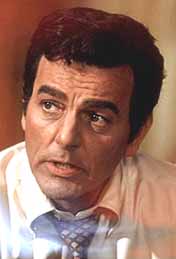 |
|
Mike
Connors (Krikor Ohanian)
|
His first genocide-film effort was most likely
1983's THE FORGOTTEN GENOCIDE, which is what the debate you read was regarding. It
is described as "A classic and definitive film about the first genocide of
the Twentieth Century told for the first time by eyewitness accounts of Armenian
survivors and rare archival film footage." The 28- minute exercise was
later supplemented with an extra 17-minute short. Parts I and II, if you will, were
both narrated by television's "Mannix," Mike "Touch" Connors,
originally named Krikor Ohanian.
|
| |
Other Biased, Armenian Butt-Kissing PBS Shows:
The Armenians, a
Story of: Survival (2002)
The Great War (1996)
An Armenian Journey
(1988)
|
|